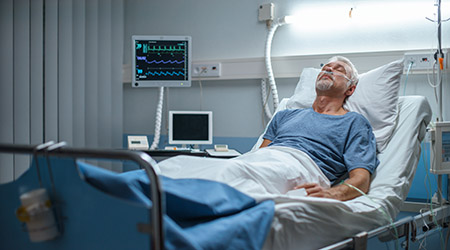Healthcare facility managers have long known that facility factors such as natural light, lighting systems and noise levels play key roles in the overall wellbeing of occupants and patients. Now a new study takes a closer look at their impact on the health and recovery of patients.
Hospitalized patients often suffer from sleep deprivation due to environmental noise and interruptions from staff. A new study in the June 2021 issue of The Joint Commission Journal on Quality and Patient Safety implemented a nonpharmacologic sleep hygiene bundle intervention to improve patients’ sleep.
The study measures self-reported sleep for patients on a general medicine unit. The sleep hygiene bundle is composed of a short script with sleep hygiene prompts, such as whether patients would like the shades closed or the lights turned off, as well as a sleep package including an eye mask, ear plugs, lavender scent pad and non-caffeinated tea. Relaxing music was played at bedtime, and signs promoting the importance of quietness at night were placed around the unit.
A total of 931 patients received the sleep intervention. In a sample of surveyed patients, the Richards-Campbell Sleep Questionnaire global score increased from 6.0 to 6.2 from the pre- to post-intervention periods, as well as in three of the five individual survey components. Additionally, the Hospital Consumer Assessment of Healthcare Providers and Systems “quietness at night” score also increased from 34.1 percent to 42.5 percent from the pre- to post-intervention periods.
The researchers concluded that a non-pharmacologic sleep hygiene protocol, paired with provider education and use of champions, were associated with modest improvements in patients’ perceived sleep.

 Why Identity Governance Is Becoming a Facilities Management Issue
Why Identity Governance Is Becoming a Facilities Management Issue Habitat Health Opens South Los Angeles PACE Center
Habitat Health Opens South Los Angeles PACE Center Denton County MHMR Center Suffers a Data Breach
Denton County MHMR Center Suffers a Data Breach What Every EVS Leader Needs To Know
What Every EVS Leader Needs To Know Blackbird Health Opens New Clinic in New Jersey
Blackbird Health Opens New Clinic in New Jersey